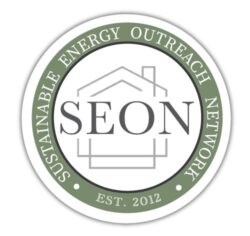In a shocking exposé titled “‘I wanted to cry’: Devastating risks of spray foam insulation hidden from Vermont homeowners,” published on May 22, 2023, in VT Digger, Alden Wicker brings attention to the alarming risks associated with spray foam insulation. The article sheds light on cases of poor installation, moisture issues, and resulting damage, underscoring the lack of regulation and certification requirements for installers, particularly in Vermont.
While organizations like SEON (Sustainable Energy Outreach Network) and its member Efficiency Vermont strive to promote proper insulation practices, they face challenges due to the absence of certification mandates for builders in the state. This highlights the need for homeowners to seek guidance from building science experts and address moisture concerns before considering spray foam insulation.
In certain circumstances, certain jobs necessitate the use of spray foam insulation due to specific location requirements or unique needs. However, it is crucial to engage the expertise of a high-performance specialist who can guide you in making informed decisions regarding its application and installation. Attention to detail is paramount when dealing with spray foam insulation, as any improper installation can lead to significant issues that are both challenging and expensive to rectify. Therefore, ensuring meticulous and accurate installation is essential to avoid potential complications and costly repairs.
Guy Payne, Executive Director of SEON
Unforeseen Consequences
Wicker’s article shares the disheartening story of Abe Crossman, a contractor from Londonderry, who made a devastating discovery while working on his own home. Peeling paint on the roof trim led to the shocking realization that the wood beneath had disintegrated into dust, exposing only spray polyurethane foam insulation. Crossman’s experience serves as a poignant example of the potential consequences of poor spray foam installation, as he faced the challenges of dry-rotted rafters and the significant impact it had on his home.
Lack of Regulation and Certification
The lack of regulation and certification requirements for spray foam installers in Vermont is a significant concern. In contrast to Canada, where spray foam installers must be third-party certified, the United States lacks legally mandated training or educational prerequisites at the federal or state level. This regulatory gap leaves homeowners vulnerable to underqualified and unregulated contractors who may downplay the risks of spray foam insulation while marketing it as a quick, affordable, and eco-friendly solution.
Expert Insights on Building Science
To mitigate potential risks, homeowners are strongly advised to consult building science experts and address moisture concerns before considering spray foam insulation. Notably, Jim Bradley, Chris West, and Peter Yost, who are experts in building science and also SEON certification instructors/members, provide valuable insights into the complexities and limitations of spray foam insulation. They emphasize the importance of comprehensive moisture management and taking a holistic approach to building performance. West specifically warns against using spray foam insulation in older homes, while Yost stresses the significance of managing both energy and moisture with equal intensity, involving building science professionals in the process.
Challenges with Spray Foam Insulation
Chris West, a certified consultant and trainer for Passive House, explains that the conditions required for mixing and installing site-created insulation, as specified by manufacturers, are often challenging to meet in real-world conditions. These conditions involve specific temperature, humidity, and dust levels. While acknowledging that there are skilled spray foam contractors in Vermont who do excellent work, West advises against using spray foam insulation in older homes, including those built in the 1950s or earlier.
Significant Long-Term Consequences
Jim Bradley, the founder of Authenticated Building Performance Diagnostics, shares his personal experience with the emergence of rot issues related to foam insulation. His decision to have the roof of his home spray foamed without ventilation, following what he believed were best practices, resulted in significant long-term consequences. Bradley emphasizes the need to align energy-saving initiatives with the goal of reducing premature failures in construction.
Moisture Management, Comprehensive Testing, and a Holistic Approach
Peter Yost, a certified builder instructor and SEON member, emphasizes the equal importance of managing both energy and moisture. Focusing solely on energy efficiency without recognizing moisture can lead to problems. Homeowners should involve building science professionals who understand the complexities of moisture management, especially in existing homes. Yost conducted blower door tests and smoke tests to identify air leakage, revealing significant leaks that the spray foam insulation failed to address. These tests highlight the importance of comprehensive testing immediately after insulation installation to ensure its effectiveness.
Sustainable Considerations, Resources and Support, and Safety
Concerns arise regarding the sustainability of spray foam insulation due to its embodied carbon and reliance on fossil fuels during production. Homeowners are encouraged to explore alternative insulation options that prioritize lower embodied carbon and renewable materials to minimize environmental impact. Efficiency Vermont and SEON offer valuable resources, training programs, and support to homeowners. These organizations play a crucial role in assisting homeowners in making informed decisions about energy-efficient and moisture-conscious insulation choices. The risks associated with spray foam insulation underscore the need for comprehensive regulation, certification requirements, and financial incentives to ensure the safety and effectiveness of installations. Homeowners should prioritize their well-being by considering alternative insulation options and seeking professional guidance throughout the insulation process.
WAKE UP CALL TO HOMEOWNERS
The revelations from experiences with spray foam insulation serve as a wake-up call for homeowners and home remodelers. By understanding the potential risks, involving building science experts, and considering alternative insulation options, homeowners can create energy-efficient, comfortable, and durable living spaces while minimizing potential pitfalls. Implementing comprehensive regulation, certification, and financial incentives will further contribute to the safety and effectiveness of spray foam insulation installations.
• READ: 15 FACTS ABOUT SPRAY FOAM INSULATION BEFORE YOU HAVE IT INSTALLED
• FIND A CERTIFIED HIGH PERFORMANCE EXPERT TO HELP
- What is a high-performance home?
- What are the advantages to having a high-performance home?
- Air quality and a healthy home.
Maximize Efficiency and Minimize Call Backs – Even When Business is Booming

